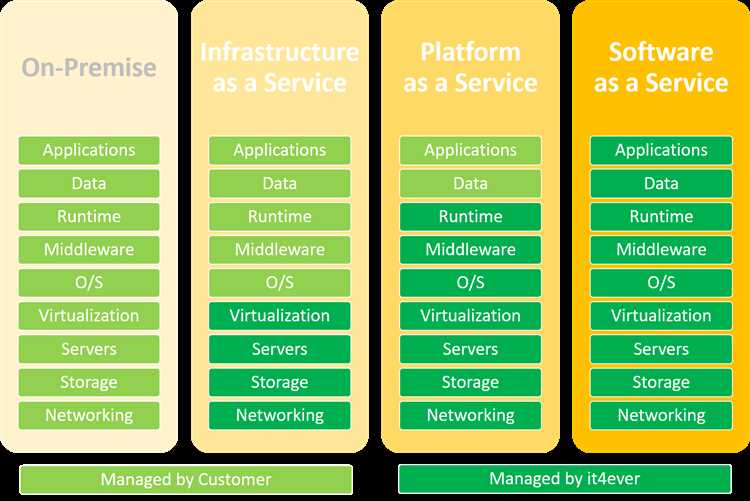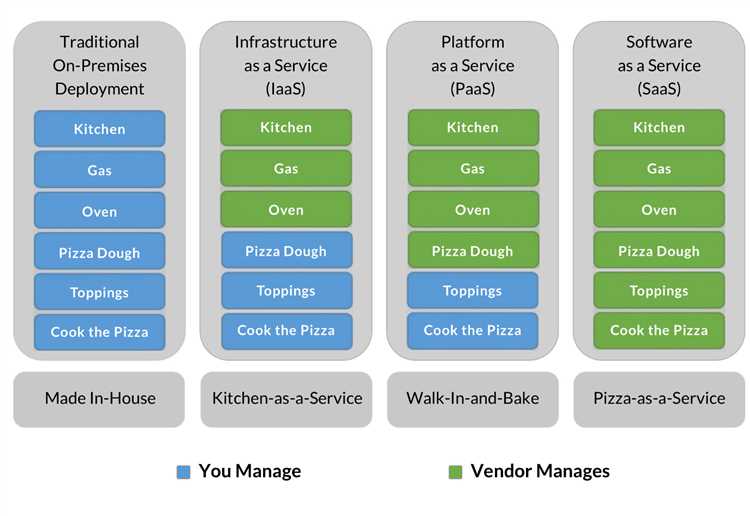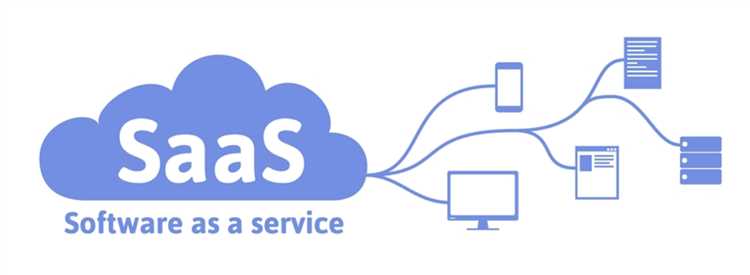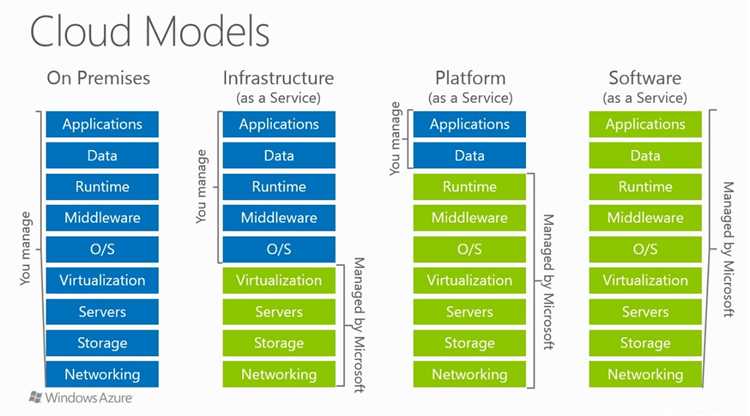Contpark specializes in offering a robust terminal management solution. Its platform includes features for real-time visibility, workflow automation, and security, simplifying terminal operations and increasing productivity.

Software as a Service (SaaS) is revolutionizing the way businesses approach software reliability. With its user-friendly and agile nature, SaaS offers a range of benefits that traditional software models simply cannot match.
One of the key advantages of SaaS is its ability to improve usability and increase productivity. The support and management of SaaS platforms are simplified, allowing businesses to focus on their core competencies instead of dealing with software issues. Furthermore, SaaS offers powerful analytics and change management tools that enable businesses to make data-driven decisions and seamlessly transition to new software versions.
Another major advantage of SaaS is its lower costs compared to traditional software models. With a subscription-based payment structure, businesses can avoid large upfront costs and pay only for the services they use. Additionally, SaaS providers handle maintenance, updates, and data management, resulting in reduced expenses on hardware, software licenses, and IT staffing.
SaaS also offers increased security through its multi-tenant architecture and data encryption features. By pooling resources, SaaS providers can invest in robust security measures that ensure data integrity and protect against cyber threats. This, coupled with the global reach of SaaS platforms, allows businesses to confidently store and manage their data while complying with various data sovereignty regulations.
Furthermore, SaaS offers enhanced reliability and availability. Thanks to its virtual machine architecture and disaster recovery capabilities, SaaS platforms ensure zero downtime and provide reliable backup services. This means businesses can operate without interruptions and have unlimited access to their software and data, regardless of their location or time zone.
In summary, SaaS is a safe, scalable, and adaptable platform that enables businesses to improve software reliability. Its user-friendly interface, lower costs, increased security, and continuous support contribute to enhanced usability, agility, and productivity. With SaaS, businesses can simplify software management, focus on core activities, and benefit from the latest software updates and features.
Software reliability is an essential aspect of any Saas application. It encompasses various factors such as version control, database management, and regular maintenance. By ensuring that the application is up-to-date with the latest version, developers can minimize the chances of encountering bugs and vulnerabilities. Implementing a multi-layered approach to streamlining the application’s lifecycle management can result in increased productivity and reduced downtime.
Mobile development has become a state-of-the-art solution for many enterprises. By leveraging Saas, organizations can create customizable applications that provide agility, authorization, and data protection. The adaptability and convenience of Saas platforms enable seamless interconnectivity across various devices, ensuring a resource-efficient and effortless user experience.
Service Level Agreements (SLAs) play a crucial role in ensuring a safe and cost-effective environment. By partnering with a reputable Saas provider, organizations can benefit from enhanced security measures, data integrity, storage, and backup capabilities. Additionally, the provider can handle the deployment process, eliminating the need for cumbersome installation procedures.
Enterprise-class Saas solutions offer compatibility across different platforms and devices, allowing users to work seamlessly across multiple locations. This compatibility also extends to cost-effectiveness, as Saas eliminates the need for upfront capital investments and reduces ongoing maintenance costs. With a Saas solution, organizations can focus on their core business objectives while leaving the software reliability and security concerns in the hands of the provider.

In today’s highly competitive and fast-paced business world, software reliability plays a crucial role in the success of any organization. The versatility and adaptability of reliable software allow businesses to effectively train their employees and streamline their operations. With reliable software, businesses can focus on application development and integration, instead of dealing with the painless process of debugging and upgrading their systems.
One of the key aspects of software reliability is its ability to provide an economical and upgradeable platform for businesses. The reliable software ensures that database management and data integrity are maintained, simplifying the overall process and enhancing functionality. It also provides enhanced data protection, which is a strategic factor in today’s data-driven world.
By providing a web-based and cloud-enabled solution, reliable software enables businesses to easily scale and expand their operations. It offers multi-tenancy support, ensuring that different clients can access the system simultaneously without any compromise in performance or security. This level of expandability and trust in the software enhances businesses’ usability and accessibility, leading to higher ROI.
Furthermore, with reliable software, businesses can effectively manage the application lifecycle and perform fault detection and compliance checks. This enables businesses to focus on strategic tasks and dependency management, rather than worrying about the software’s reliability and security.
Overall, software reliability is an essential component for businesses to achieve success in today’s competitive landscape. Its feature-rich and scalable nature allows businesses to leverage the benefits of technology while ensuring data protection, compliance, and integration at an optimal level.

Software as a Service (SaaS) offers numerous benefits for improving software reliability throughout the application lifecycle. The use of SaaS eliminates the need for complex database management, as it provides a resource-efficient solution that is handled by the vendor. This allows organizations to focus on other critical tasks, such as monitoring and reduced maintenance.
SaaS ensures a safe and secure software environment, as vendors provide compatibility and integration with various platforms. The versatility and customizable nature of SaaS solutions allow organizations to tailor their software to their specific needs, providing a feature-rich experience. Additionally, outsourcing software reliability to a SaaS provider helps with dependency management and ensures a reliable test environment for real-time performance tuning.
With the use of Service Level Agreements (SLAs), SaaS providers offer effortless maintenance and constant monitoring to ensure fault tolerance. The enterprise-class service provided by SaaS vendors allows organizations to have a virtual, painless experience with high levels of user access control and trust.
The user-centric approach of SaaS makes it a flexible and convenient solution for application development. The simplicity of SaaS deployment and management results in reduced complexities and increased fault tolerance. It offers a secure and scalable environment that enables organizations to focus on their core business objectives.

In recent years, many organizations have successfully implemented Software as a Service (SaaS) to enhance the reliability of their software solutions. Through the adoption of SaaS, companies have experienced numerous benefits, including reduced costs, faster deployment, increased security, and improved collaboration.
Portability: SaaS offers a high level of portability, allowing companies to access their software applications from any device with an internet connection. This flexibility enables employees to work remotely and enhances productivity.
Interconnectivity: SaaS facilitates seamless integration with other software systems and platforms, enabling organizations to create interconnected ecosystems that enhance data sharing and collaboration among different teams and departments.
Multi-tenancy: With SaaS, multiple users can access the software application simultaneously in a secure and efficient manner. This multi-tenant architecture reduces costs and simplifies maintenance by allowing multiple clients to share the same infrastructure.
Painless maintenance: SaaS providers take care of software maintenance, including updates and patches, ensuring that the software is always up-to-date and running smoothly. This eliminates the need for organizations to allocate resources to maintain and troubleshoot software issues.
Continuous deployment: SaaS allows for continuous deployment of software updates, enabling organizations to roll out new features and enhancements in real-time. This agile approach to software development ensures that customers always have access to the latest version of the software.
Real-time analytics: SaaS platforms often include built-in analytics capabilities, providing organizations with real-time insights into their software’s performance and usage. This allows for proactive decision-making and optimization of software resources.
Virtualization: SaaS leverages virtualization technologies to enable on-demand resource allocation and load balancing. This ensures high-performance and scalability, even during peak usage periods.
Increased security: SaaS providers implement state-of-the-art security measures to protect customer data and ensure authorized access. This eliminates the need for organizations to invest in expensive security solutions and allows them to focus on their core business.
Effortless customization: SaaS platforms often offer customizable features and configurations, allowing organizations to tailor the software to their specific needs without the need for extensive coding or development. This flexibility improves user experience and drives greater adoption.
In conclusion, successful implementation of SaaS for software reliability offers organizations a range of benefits, including lower costs, increased security, and improved collaboration. By leveraging the power of SaaS, organizations can focus on their core business while relying on a reliable and intelligent software provider to ensure their software solutions meet their evolving needs.
When looking to improve software reliability, it is important to consider a number of key factors when choosing a Software as a Service (SaaS) solution.
Implementing Software as a Service (SaaS) can provide numerous benefits for businesses, including improved software reliability. By following a series of strategic steps, organizations can reduce maintenance, simplify software management, and enhance reliability to ensure uninterrupted operations.
Implementing Software as a Service (SaaS) for software reliability can bring numerous benefits, such as enhanced functionality, reduced risk, and improved user support. However, there are several challenges that organizations must overcome to successfully adopt SaaS for software reliability.
By overcoming these challenges, organizations can successfully implement SaaS for software reliability and experience the numerous benefits it offers. Proper planning, coordination, and a focus on user experience are essential for a seamless transition to SaaS.

Software reliability is a critical aspect of modern technology, and the emergence of Software as a Service (SaaS) has brought significant advancements in this area. Through collaboration and scalability, SaaS has revolutionized the way software is delivered, providing fast and customizable solutions to businesses.
One of the key benefits of SaaS is the ability to offer Service Level Agreements (SLAs) that guarantee a certain level of reliability and performance. With a dedicated test environment, convenience, and a stable platform, SaaS providers enable continuous deployment without experiencing minimal downtime, reducing the risk of system failures.
SaaS also provides additional features that enhance reliability, such as fault detection, authentication, and data loss prevention. Through 24/7 support and accessibility, SaaS platforms ensure that customers have round-the-clock assistance, minimizing any potential downtime and maximizing user efficiency.
Moreover, SaaS platforms offer easy integration with existing systems, reducing the risk of compatibility issues. This allows for effortless application lifecycle management and the strategic upgrading of software, while ensuring compliance with industry standards.
Overall, SaaS has proven to be a feature-rich and versatile solution that improves software reliability. With its ability to provide zero downtime, user access control, and global accessibility, SaaS platforms offer an efficient and stable environment for businesses. By minimizing risks and enhancing stability, SaaS plays a crucial role in improving software reliability and ensuring a seamless user experience.
In the future, the use of Software as a Service (SaaS) for software reliability will become more user-centric, with a focus on user acceptance testing and user access control. This means that SaaS providers will prioritize ensuring that their software is reliable and accessible to users, allowing for seamless application development and increased usability.
Reliability will be an unlimited priority for SaaS providers, as they aim to deliver consistent and dependable software to their clients. This will involve effective dependency management and ensuring that the software operates without any downtime or disruptions.
SaaS providers will also prioritize continuous deployment and the implementation of test environments to ensure that their software is always functioning at its best. This focused approach will result in increased speed and efficiency, as well as reduced maintenance and debugging efforts.
Cloud-based SaaS solutions will continue to offer multi-layered security measures to protect user data and ensure authentication. This will allow for expanded application interconnectivity and adaptability to meet the evolving needs of users.
Furthermore, SaaS providers will invest in disaster recovery strategies to reduce the risk of data loss and downtime. This will include monitoring systems and efficient data protection measures to ensure seamless operations even in the event of unexpected events.
Overall, the future of using SaaS for software reliability will involve a strong emphasis on user-centricity, increased reliability, adaptability, and efficiency. With continuous improvement in these areas, SaaS applications will provide users with consistently reliable and seamless experiences.
SaaS stands for Software-as-a-Service. It is a cloud-based software delivery model where software applications are provided over the internet on a subscription basis.
SaaS improves software reliability by providing a centralized platform for software deployment and management. This allows for easy updates and bug fixes, ensuring that users always have access to the latest and most reliable version of the software.
Some future trends in using SaaS for software reliability include increased adoption of artificial intelligence and machine learning for automated bug detection and resolution, enhanced cybersecurity measures to protect sensitive data, and improved integration with other cloud-based services for seamless data flow and collaboration.
SaaS allows for easy scalability and improved performance by leveraging cloud infrastructure. With SaaS, organizations can easily increase or decrease their software usage based on demand, without the need for upfront investments in hardware or additional IT resources.
Some benefits of using SaaS for software reliability include reduced IT costs, increased accessibility and flexibility, automatic updates and bug fixes, better collaboration and data sharing, and improved scalability and performance.
Some potential challenges of using SaaS for software reliability include concerns about data security and privacy, reliance on internet connectivity, potential vendor lock-in, limited customization options, and the need for strong service level agreements to ensure reliability and performance.